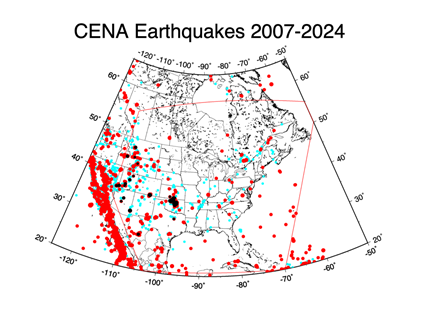Horizontal and Vertical Site Amplification and CEUS Crustal Attenuation Models
Accessing how seismic energy behaves as it moves through the Earth's crust and interacts with different types of ground material
The U.S. Geological Survey (USGS) funded a one-year collaborative project with the University of Memphis Center for Earthquake Research and Information (CERI) and Tetra Tech, Inc. to image crustal (top 40 km of the earth) seismic wave attenuation variations throughout the Central and Eastern U.S. (CEUS) for use in seismic hazard evaluation on the local, regional, and national levels.
Local geologic structure can amplify earthquake shaking by factors of 2–3 or even more. This effect is especially pronounced in areas with extensive sediment layers such as the Gulf Coast and Atlantic Coastal Plain or even smaller regional basins such as the Illinois Basin. Only recently has a sufficient number of earthquakes occurred and been recorded by seismometers throughout the CEUS to make such a study feasible (Figure 1). Particular seismic waves (S and Lg waves travelling within the crust) from earthquakes are responsible for damaging shaking and will be used in this study to determine how earthquake shaking decays with distance and can cause damage to structures.
The study will separate out the attenuation of earthquake waves with distance from local sediment amplification. The beneficiaries of this research will be the USGS National Seismic Hazard Mapping Project, professional earthquake hazard evaluators, professional engineers and geotechnical engineers, government and business emergency response planners and agencies, governmental building code and regulatory agencies, and the general public.

Figure 1: Seismicity of the CEUS and surrounding region from 2007 to 2024. Red dots are magnitude 4.0 and greater earthquakes and light blue dots are magnitude 3.5 to 3.9 earthquakes. Black dots indicate 2011-2106 earthquakes used in a previous central U.S. study. The red polygon shows the study region of the grant project.
For more information on this project, contact Dr. Chris Cramer at ccramer@memphis.edu.
